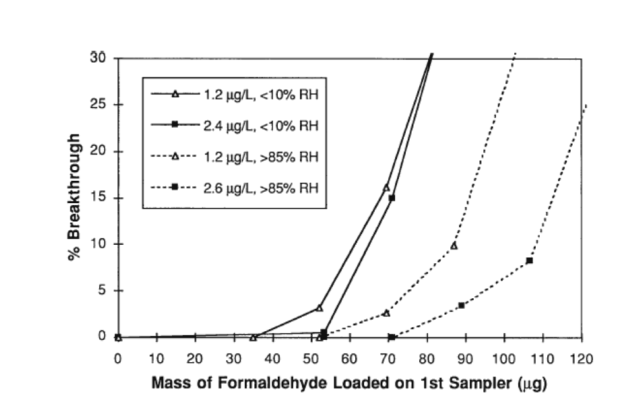How much water (atmospheric moisture) can each cartridge from the XPoSure DNPH or Sep-Pak DNPH Silica handle and still retain formaldehyde? - WKB121434
ENVIRONMENT
- XPoSure
- Sep-Pak DNPH
- Dinitrophenylhydrazine (DNPH)
- moisture
- formaldehyde
- capacity
ANSWER
This depends on many factors, including the relative humidity level, temperature, and flow rate.
ADDITIONAL INFORMATION
Waters recommends that a breakthrough study be performed in order to determine how much formaldehyde can be retained on each XPoSure Cartridge under the given test conditions.
See Appendix C in the Sep-Pak XPoSure Aldehyde Sampler Care and Use Manual and Sep-Pak DNPH-Silica Cartridges Care and Use Manual for instructions on how to perform a breakthrough study.
Mass capacity of formaldehyde increases as humidity increases.
If conditions during air sampling fluctuate between <10% and 80% humidity, breakthrough experiments should be done at both extremes so that breakthrough does not result in lower than actual levels during the low-humidity, winter season.
Here is an example of a breakthrough study under various relative humidities:

id121434,

